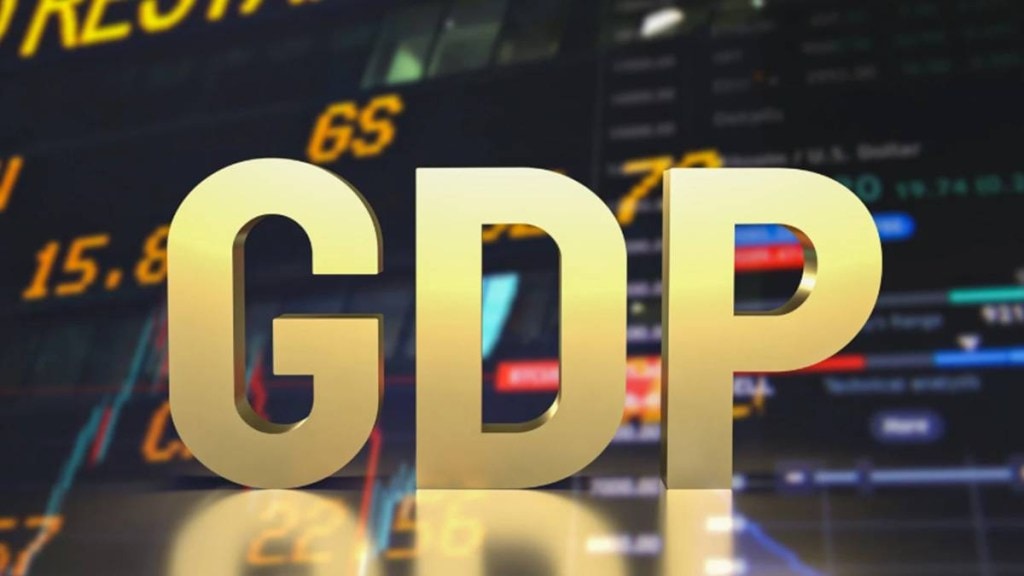The second quarter gross domestic product (GDP) numbers for FY 25-26 will be released today. In the first quarter, nominal GDP growth fell to 8.8%, only 1% point higher than the real GDP growth of 7.8%. Given current trends, the nominal GDP growth in FY 25-26 may be in the range of 8-8.5% , explains DK Srivastava
l Gap between nominal and real GDP growth shrinking
NOMINAL GDP GROWTH exceeds the real GDP growth to the extent of the percentage change in the implicit price deflator (IPD) of GDP. This difference has been coming down on trend basis, falling from 5.52% in Q3 FY21-22 to 2.88% in Q1 FY 25-26. On actual basis, it has fallen to 1% in Q1 FY25-26.
This low and downward trend of IPD-based inflation has led to a progressive narrowing of the gap between nominal and real GDP growth. The underlying reason for this is the excessively low inflation for the deflator of capital goods. While both consumption and capital goods deflator-based inflation rates have fallen, the fall in the latter is much sharper. In Q1 FY25-26, deflator-based inflation of private final consumption expenditure (PFCE) was 2.11% while that of gross fixed capital formation (GFCF) was only 0.41%.
l Below-trend nominal GDP growth
IN Q1 FY25-26, nominal GDP growth fell to as low as 8.8%, only 1% point higher than the real GDP growth of 7.8%. Fiscal aggregates are specified in nominal terms and for that reason, nominal growth is quite important. Annual nominal GDP growth assumed in the FY25-26 Budget was 10.1%. Given current trends, the realised growth may be in the range of 8-8.5%. Even if the assumed buoyancy of the government’s gross tax revenues (GTR) is realised, then growth in GTR may be lower than budgeted. Expenditure magnitudes also specified in nominal terms tend to be downward inelastic.
l GVA vs GDP
THE DIFFERENCE BETWEEN GDP at current market prices and gross value added (GVA) at basic prices in nominal terms comprises product taxes net of product subsidies. Product taxes are indirect taxes excluding land revenues and stamp and registration duties. Product subsidies mainly include food, fertiliser and petroleum subsidies.
l Negative net exports
CONTRIBUTION OF NET exports to real GDP growth was positive for the four quarters of FY 24-25. It turned negative in Q1 of FY 25-26. Given the current global situation and the tariff load that Indian exports are currently bearing particularly with respect to the US, this negative contribution is likely to continue in the near future. This has an adverse impact on headline growth. However, in the Indian context, this impact is limited as India’s GDP is largely dependent on domestic demand. Also, we expect the US tariff rates to come down in the near future.
l Govt & private consumption expenditures
OVERALL GDP CONSISTS of four components; namely, PFCE, government final consumption expenditure (GFCE), GFCF and net exports. Their respective average annual shares, considered in nominal terms, for the last three years (FY 22-23 to FY 24-25) were 61%, 10.2%, 30.5% and (-)2.7%. Some difference from 100% is due to change in stocks, valuables and discrepancies.
Thus, domestic demand in India accounts for nearly the entire GDP. Given these relative weights, it is the growth of domestic consumption and investment that drives the overall growth. Average investment growth (GFCF) was at 8.1% during FY 22-23 to FY 24-25, exceeding average consumption growth of PFCE and GFCE at 6.7% and 4.9% respectively. Given their shares in GDP, relative contributions of GFCF growth to real GDP growth was 35% and that of PFCE and GFCE was 50% and 6% on average, respectively.
l Private vs government investment
GFCF CONSISTS OF two components; namely, private investment expenditure comprising households and the private corporate sector, and public sector investment expenditure. This data is available with a lag of more than one year. In FY 23-24, the respective shares, in real terms, of households, private corporate and public sectors were 41.6%, 37.3% and 21.1%. Thus, the private sector fixed investment accounted for 78.9%. However, growth of household and private corporate sector investment was rather low in FY 23-24 at 5.8% and 0.5% whereas that of the public sector investment was 29.2%. In FY 24-25, overall GFCF growth was 7.1% with government investment growth at 10.5%.

